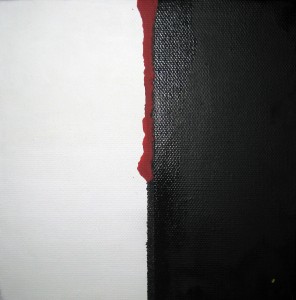Week 13
 In reading Blue-Eyed Devil, I was struck by the themes of opposition and of blood. The rhetoric of the Nation of Islam and Five-Percenters created an opposition of white devils versus black Muslims. (The Nation of Islam was a response to white-imposed racial divisions, but I speak here only to the religious implications.) Michael was navigating this landscape as an ironically self-proclaimed “blue-eyed devil” looking for fellow Muslim brothers and sisters.
In reading Blue-Eyed Devil, I was struck by the themes of opposition and of blood. The rhetoric of the Nation of Islam and Five-Percenters created an opposition of white devils versus black Muslims. (The Nation of Islam was a response to white-imposed racial divisions, but I speak here only to the religious implications.) Michael was navigating this landscape as an ironically self-proclaimed “blue-eyed devil” looking for fellow Muslim brothers and sisters.
Alongside the overarching theme of black-white opposition and Muslim brotherhood, I noticed a concurrent but more implicit theme of blood and suffering. Personally, Michael suffered at the hands of his mentally ill father. Religiously, Michael references the martyrdom of Imam Husain numerous times, an event that defined Shi’a Islam as a sect born out of suffering rather than triumph. Institutionally, as mentioned prior, the Nation of Islam gained momentum as a response to the systematic oppression of blacks in America.
In Chapter 10 of Blue-Eyed Devil, the idea of “blood atonement” is explored, with Michael writing: “I’m no anthropologist, but Blood Atonement could be the world’s oldest religious idea, so old and deeply rooted that it doesn’t even need religion” (p.60). He relates the idea to depressed self-injurers, thumb-task wrestlers, Jesus’ suffering on the cross, the martyrdom of Husain, and the assassination of Malcom X. He attends a ceremony of matam (self-injury in commemoration of Husain) and, dissatisfied with its tameness, performs his own act of crying blood by pouring thumbtacks on the floor and throwing himself on them.
For my creative response, I made an abstract piece incorporating the themes of opposition and blood. One half of the canvass is white and the other black, in direct reference to the black-white struggle in the Nation of Islam but also representing other oppositions (ex: Christian vs. Muslim, Sunni vs. Shi’a). In the middle is a “tear” of blood that touches both sides. This is to represent both the bloodshed spilled in the fighting between both sides and the blood atonement common to both sides. Blood both divides and unites us in life and death.